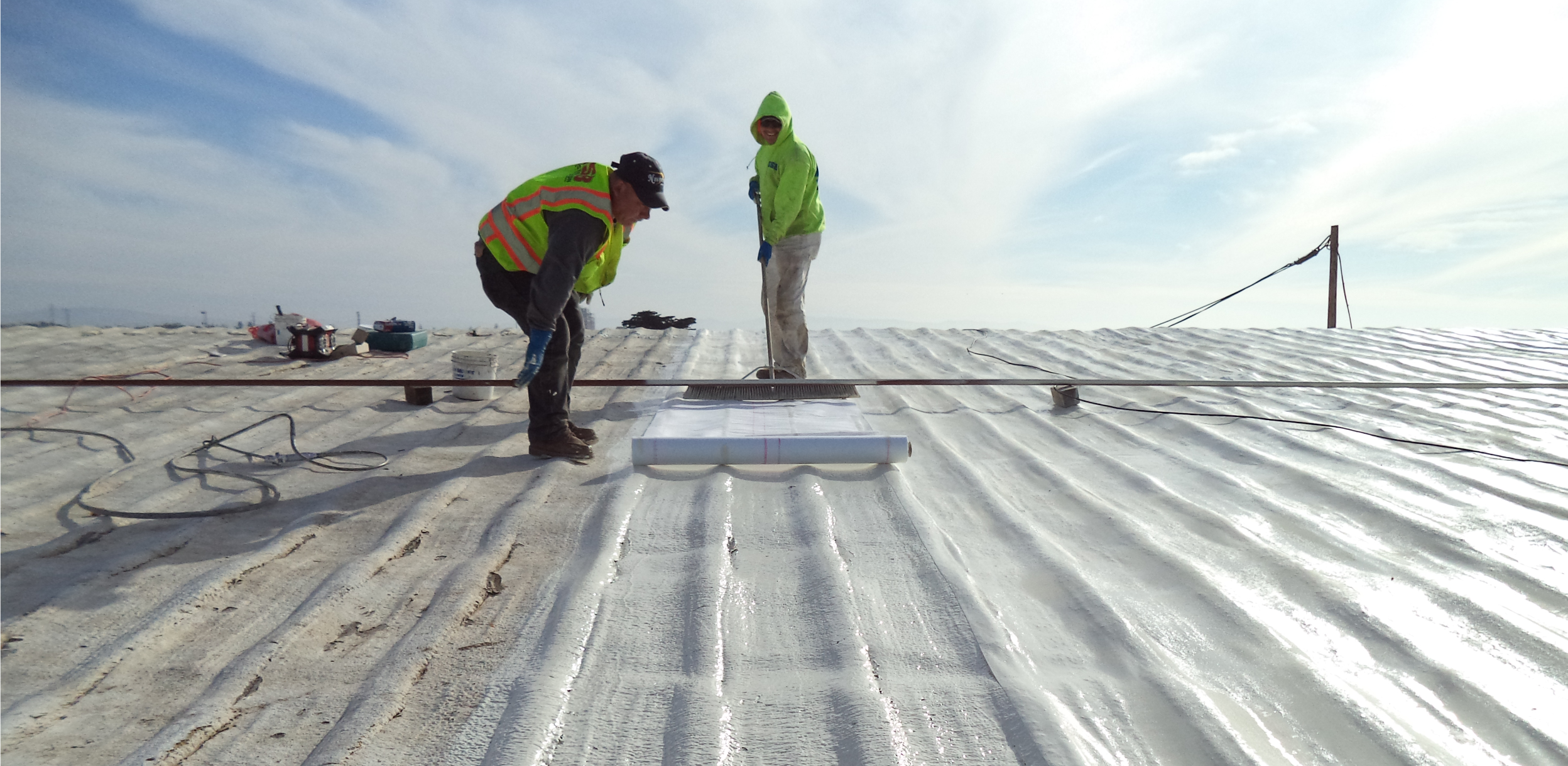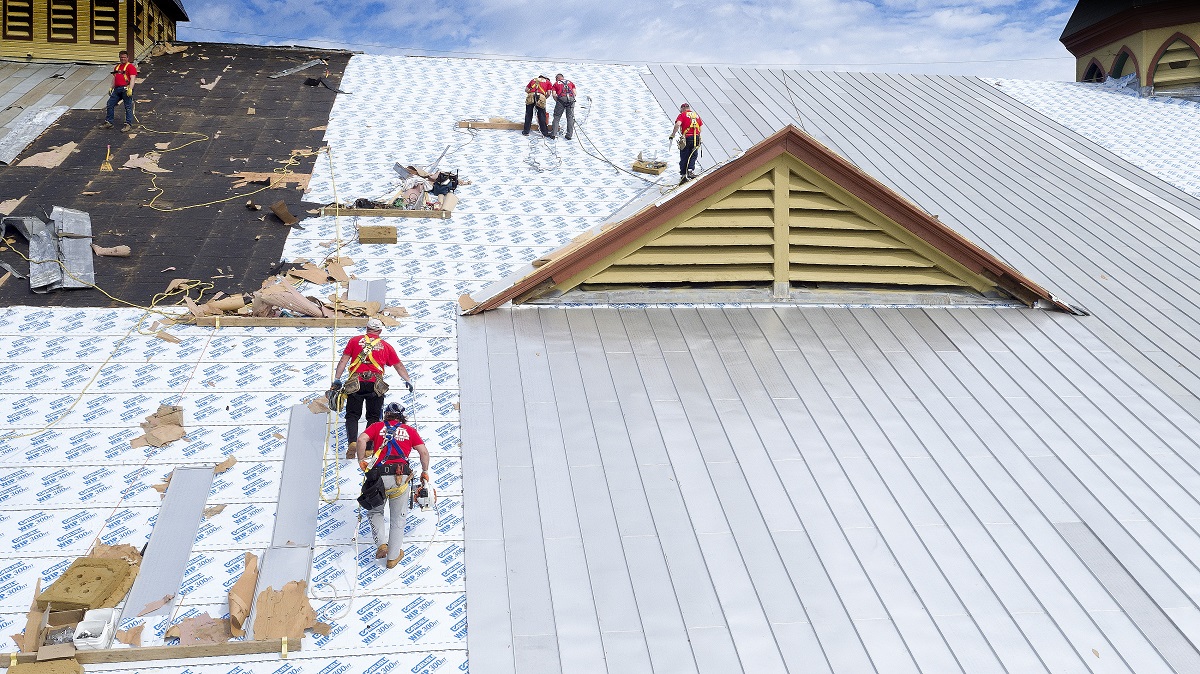What Weather Is Best for Applying Roof Coating Work

Strong 8k brings an ultra-HD IPTV experience to your living room and your pocket.
When planning any major roofing project, understanding the ideal weather conditions is crucial to ensuring quality results and long-term performance. This is especially true for roof coating services, which require specific environmental conditions to cure and adhere properly. Whether you're a homeowner considering a protective coating or a business evaluating maintenance needs, timing your project during the right weather is key. Poorly timed applications can result in wasted materials, premature coating failure, and higher repair costs down the road. That’s why roof repair Lancaster PA professionals emphasize the importance of seasonal timing when applying roof coatings to ensure maximum durability, energy efficiency, and value. By working with experienced specialists who understand how weather impacts product performance, property owners can ensure their roof coating services are completed under optimal conditions providing longer-lasting protection and better overall results.
Understanding the Roof Coating Process
Before diving into weather considerations, it's essential to understand how roof coatings work. Roof coatings are fluid-applied membranes that form a seamless barrier over a roof surface. They protect against UV radiation, reduce energy costs by reflecting sunlight, and prevent leaks.
Different types of coatings such as acrylic, silicone, polyurethane, and asphalt-based options have specific requirements for curing. The curing process relies on air temperature, surface temperature, and humidity. These variables determine how well the product adheres and how fast it dries. Improper environmental conditions can compromise adhesion, reduce longevity, and lead to coating failure. That's why understanding the best weather for application is non-negotiable.
The Ideal Weather Conditions for Roof Coating Work
Choosing the right weather ensures proper adhesion, curing, and longevity of roof coatings.
Temperature Requirements
The best time to apply roof coatings is when the ambient air and surface temperatures are between 50°F and 85°F (10°C to 29°C). This range supports optimal curing and ensures that the coating spreads evenly and bonds properly.
Some high-performance coatings can tolerate slightly cooler or warmer temperatures, but extreme heat or cold should always be avoided. Cold temperatures slow down the drying process, increasing the risk of dust contamination or premature water exposure. On the other hand, hot conditions can cause the coating to cure too quickly, reducing its flexibility and adhesion.
Humidity and Moisture Concerns
Humidity levels should be moderate ideally between 40% and 60%. High humidity delays the curing process and can trap moisture beneath the coating layer. If dew or condensation forms on the surface, it can lead to bubbling, peeling, or an uneven finish.
It is also essential that the roof surface is completely dry before application begins. Moisture trapped between the coating and the roof substrate can cause long-term damage.
Experienced roof coating contractors always check moisture levels using specialized equipment and avoid coating just after rainfall or during heavy morning dew.
Wind Speed Considerations
Strong winds can interfere with the application process by blowing dirt and debris onto the wet coating. Wind may also make it difficult to achieve an even, smooth finish especially for spray-applied coatings. Ideally, wind speeds should remain below 10–15 mph during application to avoid contamination and ensure precision.
Avoiding Rain and Wet Conditions
No matter the season, rain should be avoided for at least 24 to 48 hours after application. If rain falls on the roof before the coating cures fully, it can wash away the material, weaken the adhesion, and result in patchy coverage.
Weather forecasts should be closely monitored before scheduling work. Many roof coating services near me offer flexible scheduling to work around changing weather conditions.
Best Seasons for Roof Coating Projects
Certain seasons offer optimal temperature and moisture conditions for successful roof coating applications.
Spring
Spring is often a favorable season for roof coatings. Temperatures are moderate, humidity is relatively low, and precipitation is generally manageable with good planning. However, spring rains can be unpredictable, so contractors often plan jobs with short notice to align with dry windows.
Summer
Early to mid-summer is one of the most popular times for coating work. Long days and dry weather provide ideal conditions, but extreme heat can be a concern especially on dark-colored roofs that absorb more heat. Professional roofing contractors Lancaster PA usually schedule work early in the day to avoid the afternoon heat and allow sufficient curing time.
Fall
Fall is another excellent window for roof coatings. Temperatures begin to cool, and humidity drops. Early fall offers plenty of dry days and mild conditions that promote strong adhesion and smooth finishes. However, as the season progresses, contractors must stay alert for sudden drops in temperature and the first frosts.
Winter
Winter is generally not recommended for roof coating applications unless the climate is unusually mild. Cold temperatures below 50°F can severely delay curing, and snow or freezing rain poses significant risks. Even in warmer regions, short daylight hours and increased humidity can create challenging conditions for proper application.
Risks of Coating in Poor Weather Conditions
Coating a roof during less-than-ideal weather can result in:
- Poor adhesion, leading to premature failure.
- Bubbling or peeling from trapped moisture.
- Extended drying time, allowing dirt, insects, or debris to ruin the finish.
- Inconsistent thickness or patchy coverage.
Fixing these issues often requires re-coating or extensive repairs both of which can be costly and time-consuming. That’s why timing your project is an essential step, not just a recommendation.
How Professionals Choose the Right Time
Experienced roof coating contractors use a combination of experience, data, and monitoring tools to determine the right time for application. They check local weather forecasts, use infrared moisture scanners, measure surface temperature directly, and time the application to avoid direct midday sunlight when necessary.
Hiring trusted roofing contractors Lancaster PA ensures your coating is applied under the best conditions. Local professionals understand seasonal patterns in Lancaster and can guide you to make smart timing decisions that support the longevity and performance of your roof.
Conclusion
Timing is everything when it comes to roof coatings. Whether you're preserving a flat commercial roof or upgrading a sloped residential one, weather plays a critical role in the success of the project. The best weather for applying roof coating services is typically found during spring and fall, with temperatures between 50°F and 85°F, moderate humidity, and no immediate risk of rain.
Professional contractors like those at roof repair Lancaster PA rely on weather insight, technical expertise, and high-quality materials to deliver superior results. By aligning your project with ideal conditions, you'll extend your roof’s lifespan, improve energy efficiency, and avoid costly rework.
FAQs
What happens if it rains after roof coating?
If rain falls before the coating cures, it can compromise adhesion and cause the material to wash away or bubble. Most coatings require 24–48 hours of dry conditions to cure fully.
Can roof coating be applied in winter?
Roof coatings should generally not be applied in winter unless the temperatures stay above 50°F and conditions remain dry. Cold weather delays curing and can reduce effectiveness.
How do I know when it’s the right time to coat my roof?
Check the local weather forecast for a dry window with mild temperatures. Consult local roof coating contractors who can help schedule the work at an optimal time.
Is humidity a problem for roof coatings?
Yes, high humidity slows down drying and can lead to moisture being trapped under the coating. It’s best to apply coatings when humidity is between 40% and 60%.
How long does roof coating take to dry?
Drying times vary by product and weather, but most coatings require at least 8–24 hours to be touch-dry, and up to 48 hours for full curing under ideal conditions.
Note: IndiBlogHub features both user-submitted and editorial content. We do not verify third-party contributions. Read our Disclaimer and Privacy Policyfor details.



